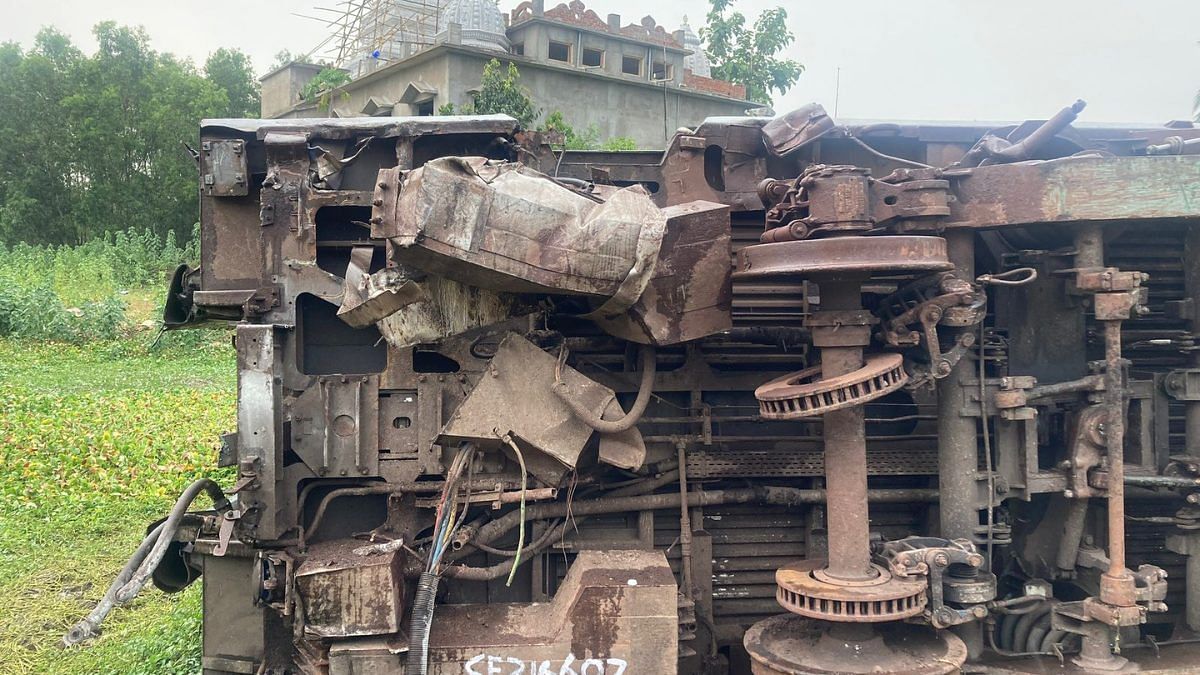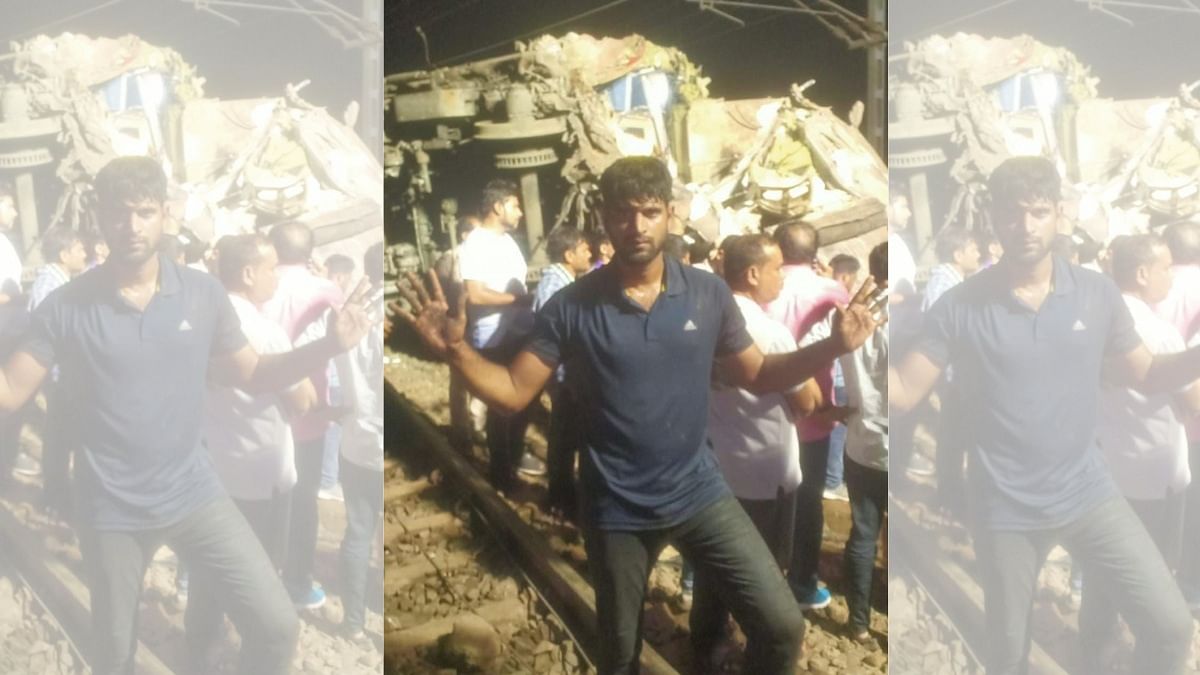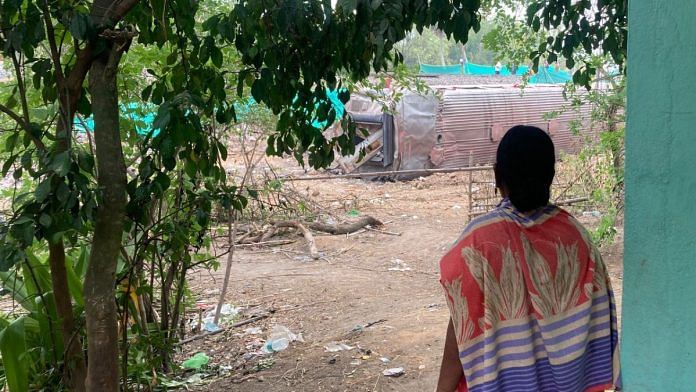Bahanaga Bazar: The villagers of Bahanaga Bazar in Odisha are wondering what to do about the stench in the air.
Days after one of the deadliest rail accidents took place metres from their homes, certain points along the railway track still carry a whiff of rot and iron. The villagers were the first responders to the triple train tragedy on 2 June, rushing to the spot where the Coromandel Express and the Yesvantpur-Howrah Superfast Express derailed after the former collided with a goods train parked at the tiny station.
Authorities from the nearby Balasore district headquarters only arrived 30 minutes after the disaster, and then took time to set up the infrastructure for rescue. In the meantime, the villagers did all they could to help passengers from the two trains. The accident killed 288 people, and injured hundreds more.
Using their mobile flashlights and their wits, the villagers worked in the dark to hold the fort until the National Disaster Relief Force (NDRF) and medical personnel arrived.
Nearly every villager has a story to tell. Ronald Das, named after Brazilian footballer Ronaldo, was the one to rescue the two loco pilots of the Coromandel Express. Deepak Behera, a former helicopter technician with the Army, mobilised a group of men to rescue injured passengers and even pitched in to drive a JCB organised by the local administration to clear up the wreckage.
Women offered water and first aid to injured passengers crawling out of the wreckage. Umakant Behera, a shopkeeper outside the railway station, kept his store open for 72 hours straight to offer food and refreshments to medical staff, police, officials, and the media.
Days later, the village is still reeling from the accident that took place on its doorstep.
“When I close my eyes, I am transported back to the evening, people wailing in pain, asking for help,” farmer Devendra Muduli told ThePrint. “But I know it’s real because when I open my eyes I can still see the bogies near the track, and I can still smell this stench.”
Also read: 6 days on, Odisha train accident victims’ families continue desperate search for loved ones
The loco pilots’ rescue
First, the villagers heard the sound of the collision. Then the electricity went. And then they saw the smoke.
Even after rushing to the site of the accident, the extent of the tragedy only became clearer as they moved further along the wreckage in the dark — each train carriage more horrific than the last.
Ronald Das was at the local market — about 150m from the railway tracks — when the collision happened. He rushed to the spot to find an overturned AC bogie. Along with around 10 others, he jumped onto the bogie and smashed through a window to start pulling out trapped passengers.
“When I jumped down, I saw that things were far worse ahead,” said Das, who has represented Odisha in under-16 and under-19 cricket. “I saw bodies inside the next bogie. And about 10 metres ahead, I saw that the engine of the train was on top of the goods train.
He asked a friend to bring a bamboo ladder from his home, about 50m on the other side of the tracks — near where bogies of the Yeshwantpur Express lay overturned. In the meantime, he jumped into the engine of the Coromandel Express.

Both loco pilots were slumped in their seats. The 36-year-old assistant loco pilot, Hazari Behera, who was heavily injured on the left side of his body, was on the phone — Das thinks he was speaking to his wife, as he remembers hearing a woman’s voice respond as Behera repeated, “I’m alive, I’m alive, will I survive?”
The loco pilot, Gunanidhi Mohanty, was looking for his mobile phone from his seat. Das gave them some water, and began to slowly extricate them — it took a total of 10 minutes to carry them both out of the carriage. Mohanty asked Das to find his flashlight and his mobile phone and put them in a bag while carrying them out. Das found the flashlight, but not the mobile phone.
He didn’t ask them how the accident had happened. But Das remembers being struck by how patient both loco pilots were with him.
“I thought they were conscious, they were alive…Others were not so lucky. Both were so patient with me, even as I was helping them out, they kept telling me to go slow, and were pointing out which parts of their body were in pain,” he said. “I just kept telling them that they would be okay.”
He has seen on the news that both loco pilots are alive and out of danger, and are currently being treated in Bhubaneswar.
“They were both Odiya,” he remarked, pausing for a second. “I shouted in Hindi when I entered the engine. But when they replied in Odiya, I realised they’re both from here. The whole thing happened so fast — the accident, then taking them out. But it will take a long time to recover from this.”
Taking matters into their own hands
The shock and the scale of the accident forced villagers to think on their feet, and fast.
Thirty-six-year-old Deepak Behera’s military training kicked in when he realised what had happened. A former helicopter technician with the Army, he’s now a certified career counsellor and trains defence aspirants to get into the Army and to get promoted.
He rounded up young men, including 19-year-olds Sachin and Jayanta and 17-year-old Kiran, and rushed to where the Coromandel Express’s carriages lay crumpled. Jayanta was sent ahead with water while the other three got to work on the mangled bogie right in front of them. When Jayanta returned, he told them the situation was far more critical ahead.

They remember the sight of the overturned, crushed bogies with limbs sticking out of window grilles. Keshav remembers helping a 50-year-old woman out of the bathroom after helping clear out the rest of the bogie. Sachin helped a pregnant woman out of another. They formed a human chain to start guiding injured passengers out of the carriages.
“There was a high-voltage electrical tower that was sparking, so people were also scared of helping,” says Jayanta. “There were just so many bodies. There were hands and legs scattered. It was so scary.
When Behera got to one overturned bogie, he could see that bodies had slid to one side, piled on top of each other. After he forced open the door, the smell of sweat, blood, and iron hit him: He had to stick his head out the door and vomit.
“There was so much suffocation in that bogie, how could people be alive? Still, I started pulling them out. And then, I remember a hand suddenly gripping my ankle. That’s when I realised people were still alive in that carriage, and that they still had hope,” he says.
“I shouted at the hand to use all the strength it could to push so I could feel where the rest of the body was. I remember hearing someone respond in a South Indian language,” he says, adding that he had to call out for help when he realised he just couldn’t extricate the victim by himself.
He also remembers carrying a badly injured woman out in his arms. Her waist was slit open. At one point, he tripped over something — it could have been a bag, or a body, he doesn’t know. The scream she let out is seared into his brain.
Behera, who was at the site until around 4 am, overheard the superintendent of police trying to coordinate the arrival of a JCB to the spot — but since the driver wasn’t local, it was stuck. Behera volunteered to help direct it to the accident site.
“I don’t know, I lived the nightmare for a few days. I’m grateful for my military training,” says Behera. “I was dripping at one point. But it wasn’t sweat, it was blood.”
Jayanta’s slippers broke during the rescue, and Behera lost his watch. Their clothes were soaked with blood — Jayanta says he threw up when he took his clothes off, and then was unable to eat or sleep for two days. His whole body hurt from the labour of carrying bodies — injured, unconscious, and dead — away from the accident site.
“We had nothing, we had no resources. We did everything we could,” adds Behera. “Even after authorities arrived on the spot, it took time to set up lights and generators for the rescue. Villagers had begun ferrying the injured to the nearest hospital even before ambulances arrived… Forgetting this will be impossible.”
Also read: Odisha train accident: Official flagged ‘serious flaws in signalling system’ in February
Water, hand fans, Amrutanjan
As injured passengers spilled out of the trains and onto the tracks, they were received by villagers giving them water.
Eighteen-year-old Jyothi Sahu was sitting at home scrolling through her phone when she heard the bang. The electricity went and they were plunged into darkness. She thought the smoke was from a fire — and then she heard the screams.
Sahu used every container and receptacle in the house to carry water to passengers. Her house is barely 30 metres from the track — an overturned, partially crushed bogie is still visible from her door frame. Now, the Railway Protection Force has cordoned off the area and personnel are vigilantly watching over it. But on the night of the accident, a river of blood was flowing from Sahu’s door towards the tracks as passengers cleaned themselves near her home.
“There are only four women in our house, and my uncle who was already helping carry passengers out. We were giving them whatever we could, from water to hand fans and Amrutanjan (a pain relief balm),” says Sahu. “But Amrutanjan was barely anything for the wounds they had,” she added.
Nightmares & ghosts
Haunted by what they witnessed, the villagers can’t stop talking about the accident even as they go back to their daily lives.
Bahanaga Bazar is home to a few hundred villagers, many of whom are farmers, fishermen, or labourers. The village, like much of Odisha, is used to natural disasters — the Odisha State Disaster Management Authority trains community-level volunteers in each block to be Aapada Mitras or first responders in cases of cyclones, earthquakes, and heat strokes. But not many villagers of Bahanaga Bazar know of this scheme, or can identify who among them was trained to be an Aapada Mitra.
The local administration couldn’t be more thankful for the help the villagers provided. “It was very risky for them to go as first responders. There were electric lines and live wires on the track, anything could have happened to them too,” says district magistrate Dattatraya Bhausaheb Shinde. “This is why I feel so proud to be collector of this district. The villagers of Bahanaga Bazar went out of pure heart.”
Days after the accident, residents are subdued, but curious — for the first time, the village has been receiving attention, with the media and police still milling about the area.
Umakant Behera, a shopkeeper who runs a store, Maa Tarini Grocery, on the path leading up to the railway crossing, didn’t leave his shop for two nights and three days after the accident. He was too afraid to sleep, and thought he could help out policemen, reporters, and the local administration as they kept visiting the railway station and the tracks.
But the real reason he can’t sleep is that he’s too scared to remember the young child he spent 30 minutes trying to save — and couldn’t.
Some superstitious villagers are also worried as the local media has been reporting on incidents of ghost sightings and hauntings. And to make matters worse, the stench in the air has convinced several that there are still corpses buried under the wreckage yet to be cleared. Devendra Muduli, a farmer, swears that he and others saw a dog eating a corpse on Monday evening.
Umakant gestures darkly at a policeman passing by — the government has announced compensation for the dead, he says, so they might be undercounting deaths. And besides, who knows who was travelling in the general compartment?
A friend texted Deepak Behera, asking him if he was concerned about the ghosts from the accident. Behera replied that he has a deeper connection with the lives lost, and those saved. He recounts carrying a limp body from the site — only one hand had strength, which was gripping the nape of his neck. He kept repeating that the man would be okay, that he would live. But he still feels the lingering impression of a body’s fading strength.
“I don’t know if he made it,” said Behera. “But I can still feel his hand on my neck, holding on to me for dear life.”
(Edited by Smriti Sinha)
Also read: How Indian Railways’ anti-collision ‘Kavach’ works & why it may not have averted Odisha tragedy



